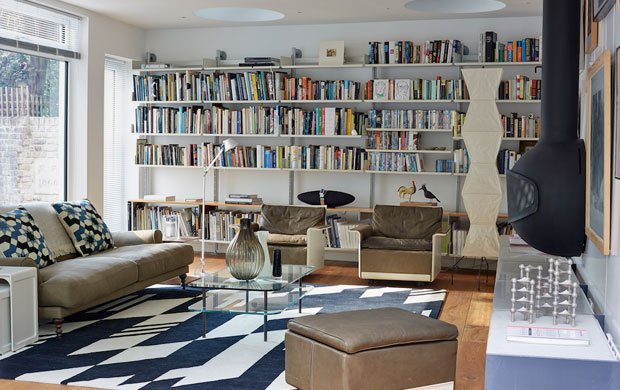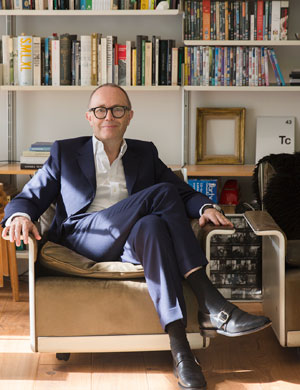You have a talent for blending the old with the new and bringing light into dark areas – what’s your philosophy as an architect?
Our concept is similar to Savile Row tailor Anderson & Shepphard’s house style, the ‘London cut’, an impeccable cut which makes you look better than you are. This is generally our approach to domestic buildings. However, sometimes a project requires more; a grand, complicated architectural gesture.
What do you love about being based in west London?
As an UCL graduate, I moved to Leinster Square [Bayswater] in 1979, mainly because it was cheap. I stayed in Leinster Square for 17 years and have lived in the area ever since.
The neighbourhood’s history has been mythologised. In reality it was a bit of dump; buildings were crumbling. It is infinitely better today and continues to improve.
There is a nice architectural homogeny to the area and a lot of our clients are based in west London [Notting Hill director Richard Curtis is one of them]. I like the fact that they have huge aspirations – every architect wants complicated, ambitious projects to work on.
Any dislikes?
A certain amount of nimbyism goes on. We take tremendous care that sub basements are properly constructed yet we often find opposition by neighbours who have already had similar work completed on their own property.
What’s your favourite space in your own family Notting Hill home?
The garden. We didn’t renovate the house until after 10 years of living in it. Previously, visitors didn’t notice the garden, but it has been opened up the space and now feels like another room in the house.

Living areas form an L shape around the garden reached via sliding windows. © Luke White
Who is your biggest inspiration?
The first architect who grabbed my attention was Robert Venturi [who designed the Sainsbury’s wing of the National Gallery]. He was the first architect to bridge the gap between popular culture and modern architecture.
What’s your favourite London building?
London is a bear pit of competing, look-at-me buildings, from the Houses of Parliament to the Gherkin, but I love the classic simplicity of the 18th century London square typology of the likes of Bedford Square and Fitzroy Square. These clearly organised, perfectly proportioned houses are so particular to London.
What’s your favourite era for architecture?
I’m interested in what’s happening now. Current architecture would not exist without the work of previous generations; Norman Foster’s work wouldn’t be here without Brunel’s efforts in engineering in the 19th century.
You recently designed philanthropist and entrepreneur Yana Peel’s late Georgian mansion – how did you get involved with the project? What presented the biggest challenge?
We are the architects for Sotheby’s so were recommended for the project. Yana’s Grade II-listed home couldn’t be restructured so we were presented with the challenge of living in a big, complicated space and how to present her art collection. We used computer-generated renderings to show how the art would look in the new design.
What has been your proudest moment?
Our work on the Royal Yacht Squadron [one of the most prestigious yacht clubs in the world] on the Isle of Wight was described as ‘simple and elegant’ in the Pevsner Architectural Guide: Buildings of England.
What’s the toughest part of the job?
Getting clients to trust your judgement. This becomes less of a problem the older and more experienced one becomes.
If you could only own one design classic what would it be?
Shelving by Vitsoe. Vitsoe’s designer Dieter Rams likened his products to an English butler; they should be there when you need them and then disappear.

© Luke White
What’s on your bedside?
A Punkt alarm clock by Jasper Morrison, which is getting a lot of use since my daughter started secondary school.
What does ‘home’ mean to you?
I have two family homes: an 18-century barn in Whitstable, Kent, which has been in the family since the ‘20s and provided my first architectural job; and my Notting Hill home. The Whitstable home is crammed with old family furniture and portraits, while everything in the London home is new. They reflect how complicated life is, living in the present day and living with old things that mean something to you. My homes offer a dramatic contrast, and reflect the tension, between the past and present.










